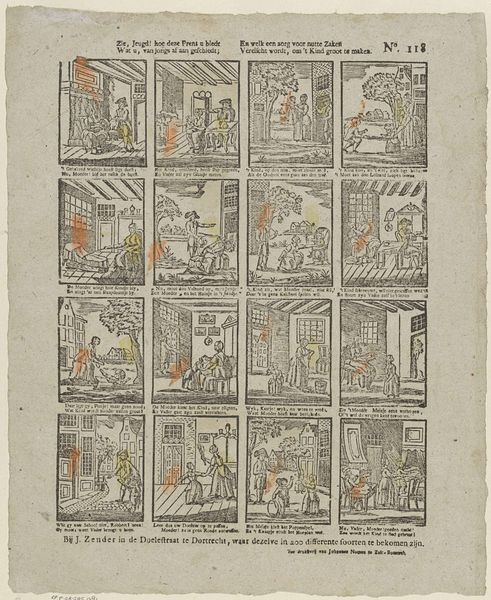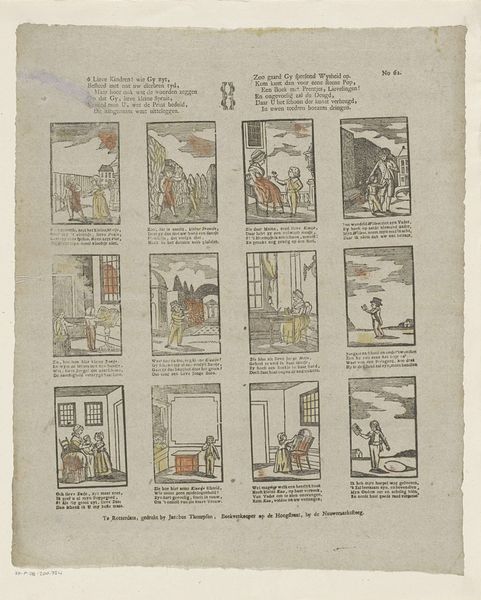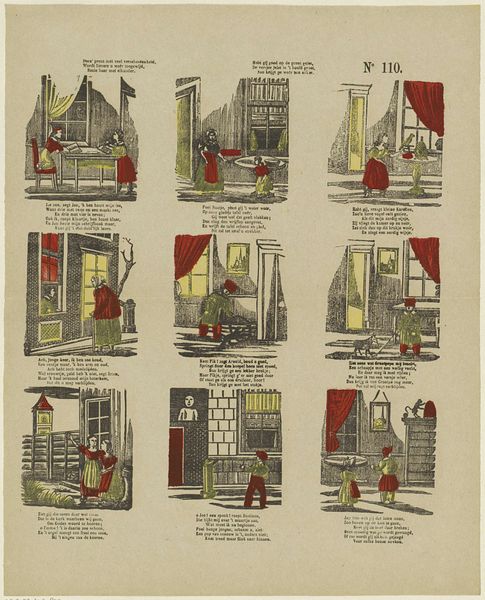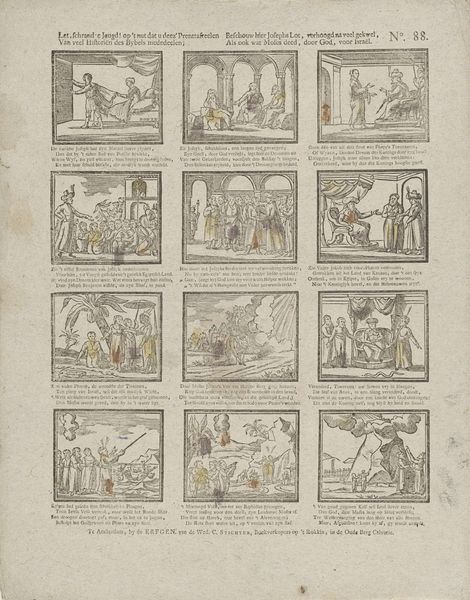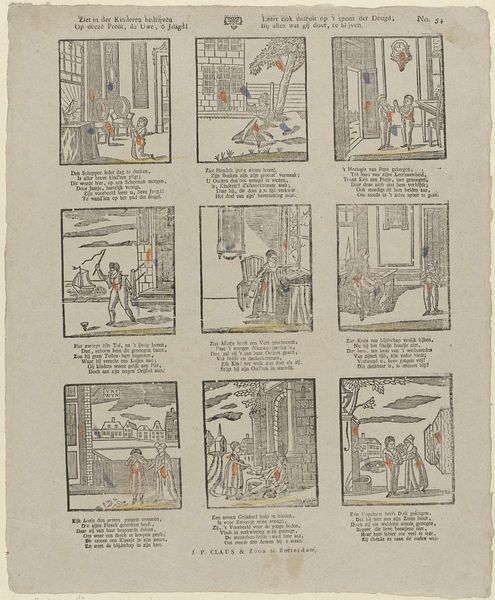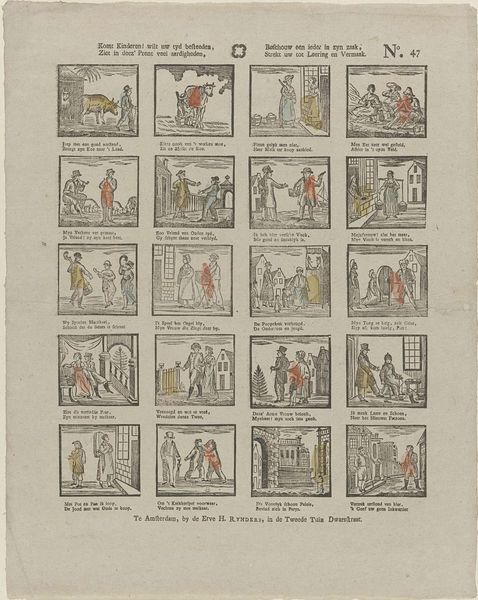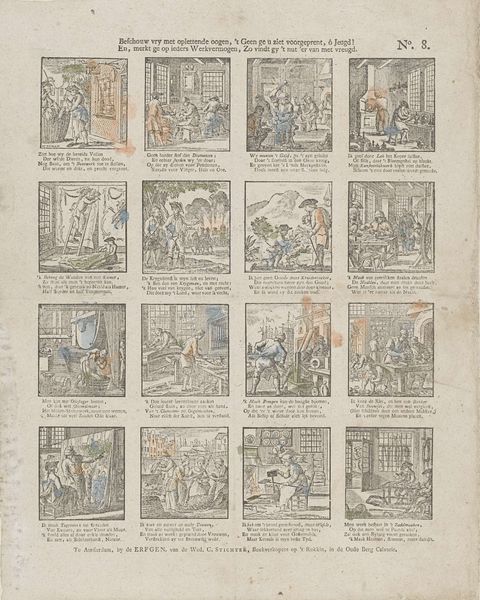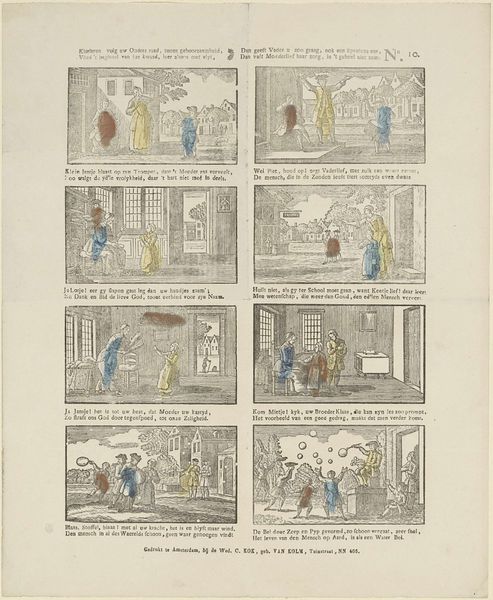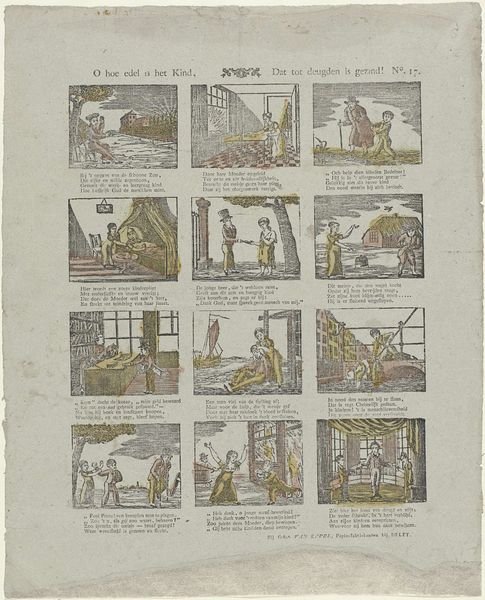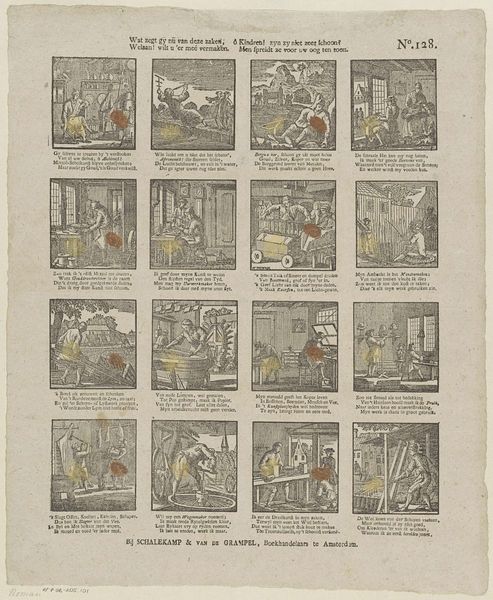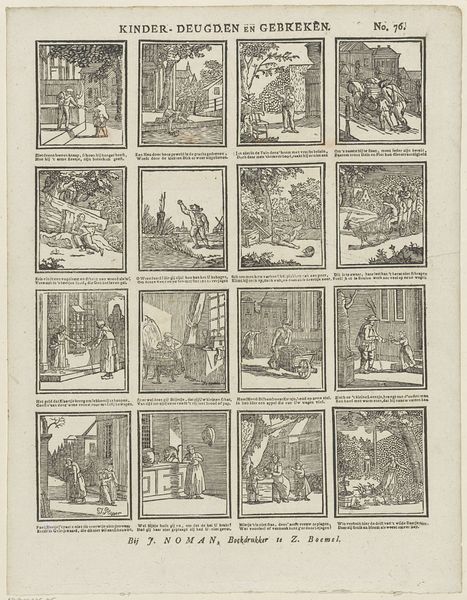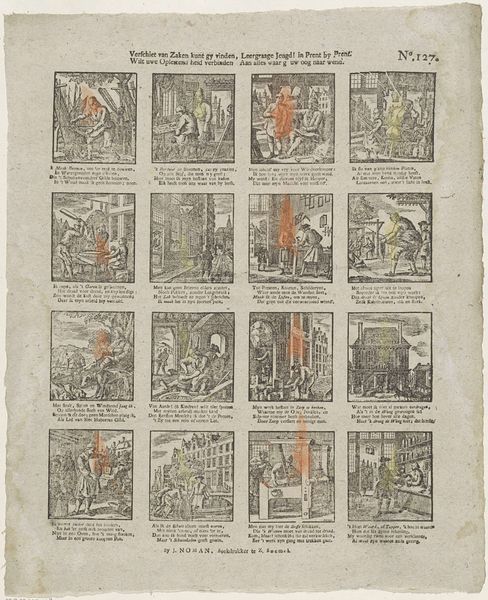
Naar uw oordeel moet gy denken, / Kindren! in dit prentgestel, / Op het geen gy u ziet schenken, / Maar onthoud de lessen wel 1715 - 1813
0:00
0:00
print, engraving
#
portrait
#
medieval
#
narrative-art
# print
#
child
#
folk-art
#
genre-painting
#
engraving
Dimensions: height 427 mm, width 355 mm
Copyright: Rijks Museum: Open Domain
Curator: The Rijksmuseum presents "Naar uw oordeel moet gy denken, / Kindren! in dit prentgestel, / Op het geen gy u ziet schenken, / Maar onthoud de lessen wel," an engraving from the period 1715-1813, attributed to the estate of widow Cornelis Stichter. Editor: My first impression is how compartmentalized it appears. Like a series of miniature morality plays, neatly organized. I immediately read this as a form of visual literature or children’s book. Curator: Precisely! This print functions as narrative-art, a series of scenes, each presenting a moral lesson. The composition uses division to showcase diverse behaviours and consequences. Notice the attention paid to interior and exterior space defining scenes for storytelling. Editor: I see that. Each scene is meticulously bordered, drawing attention to its isolated message. The visual grammar is quite stark, prioritizing clarity above all. How would such a print function in society? Curator: Prints such as these circulated broadly. Engravings like this provided relatively inexpensive imagery carrying didactic, moral weight into a growing public sphere of the time. Consider, too, the societal function of imagery reinforcing education. It reinforces societal values, primarily teaching morality, in children especially. Editor: That makes perfect sense, aligning with historical approaches to education and value transmission. Looking closer, I’m struck by the lack of strong focal point or complex symbolism in the images, or that they're rather plain from a compositional viewpoint. The strength lies in their collective effect and accessible reading for people learning morals and values. Curator: Agreed. The beauty is located within that sequential visual form; you see them as vignettes that operate together and have created cumulative effect. Editor: Indeed, understanding this engraving means examining the history and formal qualities. Thank you for drawing attention to these elements! Curator: My pleasure! Visualizing such historical contexts makes appreciation much fuller, too.
Comments
No comments
Be the first to comment and join the conversation on the ultimate creative platform.
